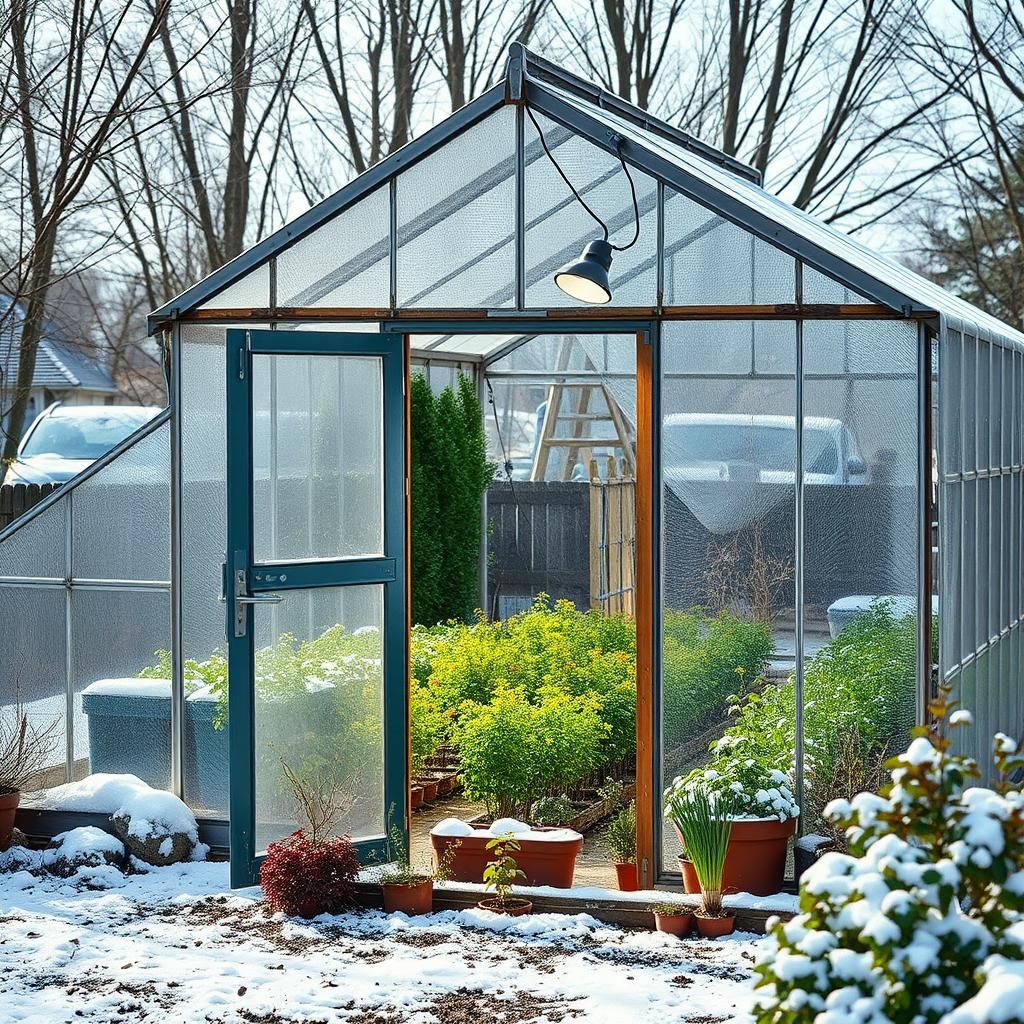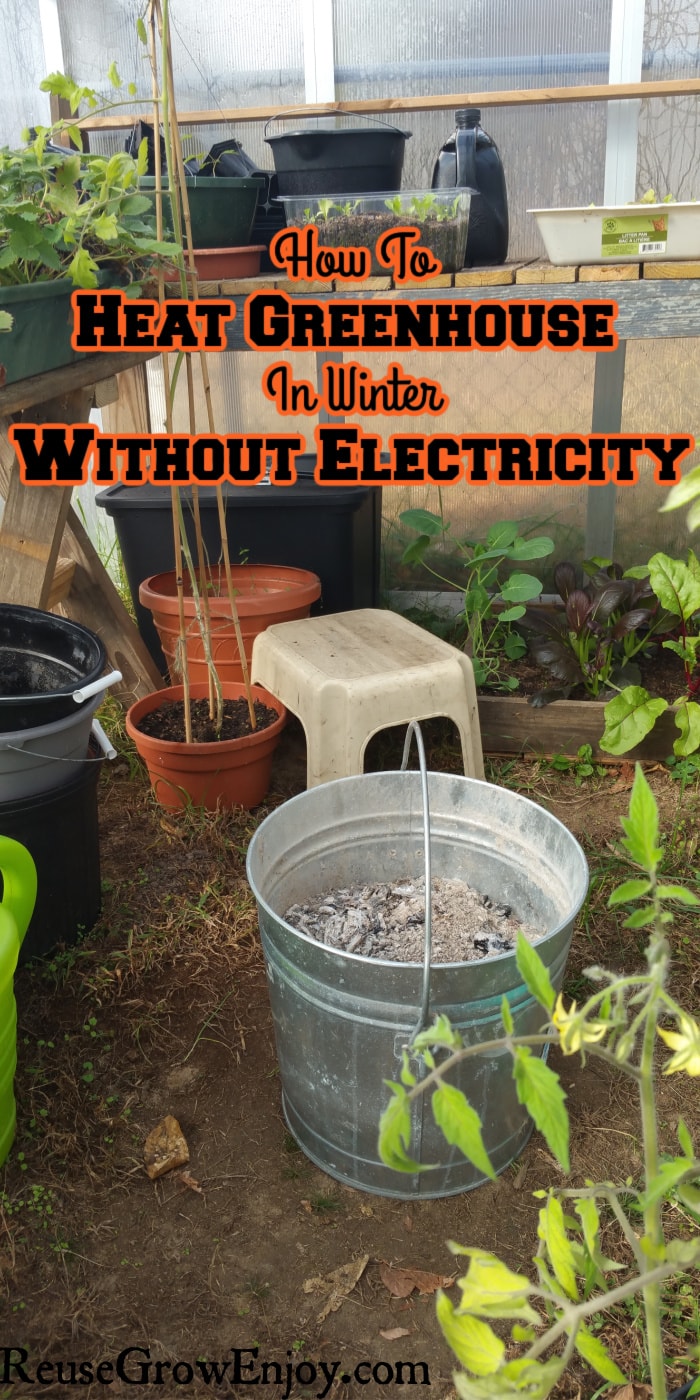What is the cheapest way to heat a greenhouse in the winter? Discover Cost-Effective Solutions for Cold Weather Gardening.

As winter approaches, maintaining a warm and nurturing environment in your greenhouse becomes essential for the health of your plants. However, heating can often be an expensive endeavor, deterring many gardeners from fully utilizing their greenhouses during the colder months. Fortunately, there are several cost-effective solutions available that can help you keep your greenhouse warm without breaking the bank. In this article, we will explore some of the cheapest ways to heat a greenhouse in winter, allowing you to enjoy a flourishing garden year-round while minimizing energy costs and maximizing efficiency.
Cost-Effective Methods to Heat a Greenhouse in Winter
Heating a greenhouse during the winter can be a challenge, but utilizing cost-effective methods can significantly reduce expenses. One of the cheapest ways to maintain warmth is through passive solar heating, which involves using sunlight to naturally heat the space. This can be optimized by placing dark materials, such as water barrels or thermal mass, inside the greenhouse that absorb sunlight during the day and release heat at night. Additionally, using insulation techniques like bubble wrap covers, thermal curtains, and strategic placement of plants can help retain heat, ultimately ensuring that your plants thrive in a warm environment without incurring high costs associated with traditional heating systems.
Passive Solar Heating
Passive solar heating is an effective and sustainable method that utilizes natural sunlight to maintain warmth in your greenhouse. By strategically placing the greenhouse to maximize sunlight exposure and incorporating materials like solar panels or thermal mass, such as stone or water, you can effectively capture and store heat. During the day, sunlight warms these materials, which then radiate warmth during colder evenings, significantly reducing the need for additional heating sources and lowering overall energy costs.
Using Water Barrels
Incorporating water barrels into your greenhouse is another economical heating strategy. Water has a high thermal mass, which allows it to absorb and store heat during the day and gradually release it at night. By placing dark-colored barrels filled with water strategically around the greenhouse, you can enhance the heat absorption effect. During the day, the water heats up in sunlight, and when temperatures drop at night, the stored warmth is released to maintain a more stable climate for your plants.
Insulation Techniques
Effective insulation is crucial for retaining heat in a greenhouse during cold winter months. Using materials like bubble wrap or thermal blankets can help trap heat, keeping the internal temperature higher. Covering the greenhouse with these materials during the night or especially during frost can prevent heat loss. Additionally, sealing any gaps and ensuring that doors and ventilation systems close properly will further improve your greenhouse's energy efficiency, ultimately lowering heating costs.
Utilizing Heat Mats
Heat mats can be a practical solution for localized heating, especially for seed germination and seedling growth. These mats can provide consistent warmth directly to the plants' root zones. By using electric heat mats, you can maintain optimal soil temperatures while using less electricity compared to conventional heating systems. This focused heating approach not only saves energy but also stimulates plant growth efficiently during the colder months.
Plant Selection and Arrangement
Choosing the right plants and arranging them intelligently can also influence your greenhouse's heating efficiency. Taller plants can provide a windbreak effect and protect smaller plants from cold drafts, while deciduous plants can allow for more sunlight exposure during the winter months when they're leafless. Additionally, placing heat-loving plants together can create a microclimate that retains heat better. By carefully selecting compatible plants and maximizing their arrangement, you can enhance the overall warmth of your greenhouse in a cost-effective manner.
| Method | Description | Cost-Effectiveness |
|---|---|---|
| Passive Solar Heating | Utilizes natural sunlight exposure and thermal mass. | High |
| Water Barrels | Uses water to absorb and release heat slowly. | Medium-High |
| Insulation Techniques | Improves heat retention using materials like bubble wrap. | High |
| Heat Mats | Provides localized heat for soil and plant roots. | Medium |
| Plant Selection and Arrangement | Strategically placing plants to enhance warmth retention. | Medium |
How to heat a greenhouse in the winter for free?

To heat a greenhouse in the winter for free, it's essential to leverage natural resources and sustainable practices. Here are several strategies that can be implemented to maintain a suitable temperature inside the greenhouse without incurring significant costs.
Using Solar Energy
Utilizing solar energy is one of the most effective methods to heat your greenhouse in winter. By allowing sunlight to enter, you can naturally warm the space. Consider the following techniques:
See also:
- Install clear plastic or glass panels on south-facing walls to maximize sunlight exposure.
- Use thermal mass materials like water barrels or large stones inside the greenhouse to absorb heat during the day and release it at night.
- Position reflective surfaces outside the greenhouse to direct additional sunlight into the structure.
Insulation Techniques
Proper insulation can drastically reduce heat loss during the winter months. Implementing effective insulation strategies includes:
- Covering the greenhouse with bubble wrap or horticultural fleece to trap heat.
- Sealing any gaps in doorways and windows to prevent drafts.
- Adding layers of thermal curtains or shades to retain warmth during the night.
Windbreaks and Shelter
Creating windbreaks around your greenhouse can significantly shield it from cold winds, thus reducing heating needs. You can achieve this by:
- Planting trees or shrubs around the greenhouse to act as a natural buffer.
- Building a fence or wall made from straw bales to deflect cold air.
- Using row covers or tarps to protect against harsh winds without limiting sunlight.
Using Compost Heat
Composting can generate substantial heat as organic materials break down, providing an excellent resource for warming your greenhouse. Here's how to utilize this method:
- Create a compost pile inside or close to the greenhouse to harness the heat generated.
- Bury heat cables in the compost pile to distribute warmth more evenly.
- Regularly turn the compost to maintain aeration and maximize heat output.
Plant Selection and Arrangement
Certain plants can help maintain a warmer environment within the greenhouse. Adopting specific planting strategies includes:
- Choose cold-hardy plants that require less heat and can survive lower temperatures.
- Group plants together to create microclimates where they can share warmth.
- Use taller plants to provide shade for shorter ones, helping maintain a balanced temperature.
How can I heat my greenhouse cheaply?

To heat your greenhouse cheaply, you can employ several strategies that utilize both renewable energy and efficient practices. Here are some effective methods:
Utilizing Passive Solar Heating
Passive solar heating takes advantage of the sun's energy to warm your greenhouse naturally. This method is cost-effective and reduces dependency on external energy sources. Consider the following strategies:
- Positioning: Orient your greenhouse towards the sun, ideally with the longest side facing south, to maximize sunlight exposure.
- Glazing Materials: Use double or triple-glazed panels instead of single glass to improve insulation and retain heat.
- Thermal Mass: Incorporate materials such as water barrels or concrete within your greenhouse. These materials absorb heat during the day and release it at night, maintaining a stable temperature.
Insulation Techniques
Proper insulation is key to minimizing heat loss in your greenhouse. Implement these techniques to enhance your greenhouse's thermal efficiency:
- Bubble Wrap: Line the interior walls with bubble wrap to provide an additional layer of insulation.
- Ground Covering: Use insulated ground covers or thermal blankets to prevent heat loss through the floor.
- Seal Gaps: Inspect and seal any gaps or leaks in the structure to prevent cold drafts from entering.
Using Alternative Heating Sources
Alternative heating sources can provide economical solutions for maintaining warmth in your greenhouse. Explore the following options:
- Wood Stoves: A small, efficient wood stove can provide consistent heat, especially if you have access to free or low-cost firewood.
- Electric Heaters: Energy-efficient electric heaters can be used in conjunction with timers or thermostats to optimize usage and reduce costs.
- Compost Heating: Utilize compost piles inside the greenhouse that generate heat as they decompose, providing a natural warming method.
Ventilation Management
Maintaining the right balance of temperature and humidity is essential, and effective ventilation can help regulate heat:
See also:
- Natural Ventilation: Use roof vents and side windows to promote airflow and remove excess heat during sunny days, preventing overheating.
- Fans: Install fans to circulate warm air and enhance the greenhouse's overall heating efficiency.
- Automated Systems: Consider automated ventilation systems that adjust based on temperature, ensuring optimal conditions without manual intervention.
Heat Storage Solutions
Implementing heat storage solutions can help retain warmth and reduce heating needs during cold nights:
- Thermal Mass Storage: Use stones, bricks, or water tanks as thermal mass that absorb heat during the day and release it slowly at night.
- Heat Retention Curtains: Install thermal curtains that can be closed at night to keep the heat inside while allowing sunlight to enter during the day.
- Earth Tubes: Use buried pipes that draw in cool air and naturally warm it before sending it into the greenhouse, ensuring more stable temperatures.
How can I make my greenhouse warm in the winter?

To make your greenhouse warm in the winter, there are several effective strategies you can employ. The primary goal is to retain heat and create a stable environment for your plants. Here are some detailed approaches:
Insulation Techniques
To keep your greenhouse warm, insulation is key. Insulating the greenhouse helps retain heat more effectively, preventing rapid temperature drops during cold nights. Here are some methods:
- Use bubble wrap: Cover the interior panes of your greenhouse with bubble wrap, which serves as an effective insulator without drastically reducing light entry.
- Install thermal curtains: Utilize thermal curtains at night to cover your plants and reduce heat loss through the greenhouse glazing.
- Add insulation panels: Consider adding removable insulation panels made of foam board to particularly chilly areas of the greenhouse during the winter months.
Heating Options
Incorporating a heating system can significantly enhance the temperature within your greenhouse. Here are some heating options to consider:
- Electric heaters: These are efficient for small greenhouses. Place them strategically to ensure even heating throughout the space.
- Propane heaters: More suitable for larger greenhouses, propane heaters can provide substantial heat output but ensure proper ventilation to avoid carbon monoxide buildup.
- Soil heating cables: These can help warm the root zone of your plants, promoting growth even in colder temperatures.
Maximizing Sunlight Exposure
To take advantage of natural heat, ensuring maximum sunlight exposure is crucial. This can be achieved by:
- Placement: Position your greenhouse to face south or southeast, allowing it to capture the most sunlight during the day.
- Regular cleaning: Keep the glass or plastic panels clean to maximize light penetration and heat absorption.
- Use light-reflective materials: Paint the outside of your greenhouse with light-colored or reflective materials to enhance the sunlight that enters.
Ventilation Management
While it may seem counterintuitive, proper ventilation management is vital in winter to maintain a balanced environment. Here’s how to manage it:
- Controlled ventilation: Open vents during the warmest part of the day to prevent overheating and close them promptly as temperatures drop.
- Passive ventilation systems: Incorporate passive systems that utilize wind and thermal dynamics to manage air circulation efficiently.
- Monitoring humidity levels: Use hygrometers to ensure that moisture levels are balanced, which can help in preventing frost without losing heat.
Soil Thermal Mass
Utilizing the thermal mass of the soil can help to regulate temperatures within your greenhouse. Here are the benefits and methods:
- Heavy soils: Using heavier, more thermal mass-rich soils can help retain heat, releasing it slowly during the night.
- Water containers: Placing large containers of water in the greenhouse can absorb heat during the day and release it during the night, acting as a heat buffer.
- Raised beds: Create raised beds filled with compost materials that generate heat as they decompose, providing additional warmth to the plants.
Questions from Our Readers
What is the cheapest way to heat a greenhouse in the winter?
The cheapest way to heat a greenhouse in the winter is to use passive solar heating techniques. This involves maximizing sunlight exposure through south-facing windows and using thermal mass materials like water barrels or stone to absorb and slowly release heat. Additionally, using insulation methods, such as bubble wrap or thermal curtains, can significantly reduce heat loss.
Are there affordable heating systems available for greenhouses?
Yes, there are several affordable heating systems available for greenhouses, such as propane heaters, electric heating mats, or fan heaters. Additionally, wood-burning stoves can provide a cost-effective and sustainable heating source, especially if you have access to free or low-cost wood.
See also:
How can I reduce heat loss in my greenhouse?
To reduce heat loss in your greenhouse, consider implementing insulation by covering the walls and roof with double-layer plastic or using bubble wrap. Sealing any gaps or cracks with weatherstripping and ensuring that vents are properly closed during cold nights can also help to maintain a stable temperature.
Can I use renewable energy sources to heat my greenhouse?
Absolutely! Utilizing renewable energy sources like solar panels can provide a sustainable and cost-effective way to heat your greenhouse. By harnessing solar energy, you can operate electric heating systems or even invest in hot water systems that can distribute heat throughout the space efficiently.

If you want to read more articles like What is the cheapest way to heat a greenhouse in the winter? Discover Cost-Effective Solutions for Cold Weather Gardening., we recommend you check out our Greenhouse category.
Leave a Reply
Related Articles